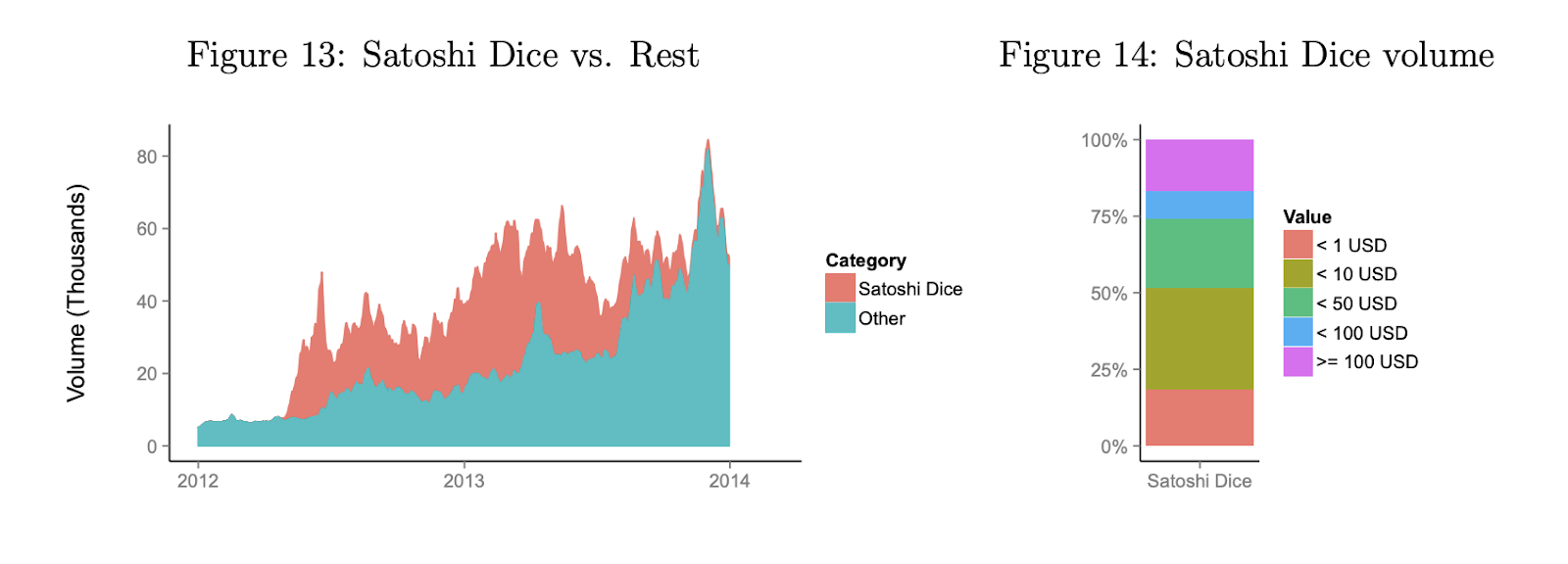This is a segment from the Supply Shock newsletter. To read full editions, subscribe.
To be clear, Satoshi never actually coded a poker game into the Bitcoin client.
Bitcoin’s creator did, however, include the graphic user interface for a poker lobby in the first version. Satoshi removed the code in the very next commit.
Erik Voorhees made up for it and then some with SatoshiDice.
The service launched around this time in 2012 as a provably fair Bitcoin betting game that mostly ran onchain.
Players would directly send bitcoin to one of many “1dice” vanity addresses, each with their own special properties designated by the platform.
Deposit between 0.001 BTC and ~20 BTC to 1dice7fUk, for example, and you’d have 24.4% odds of instantly quadrupling your coins.
Otherwise, sending up to 0.0025 BTC to 1dice1e6p… would net a 0.0015% chance of boosting your original bet by 65,000x.
The original SatoshiDice is defunct, so do your own research before interacting with any modern sites with similar names.
SatoshiDice bets won or lost depending on their transaction hash. The site would run the bet’s hash through a secondary function and use the first four bytes of that hash as the so-called lucky number.
If that number fell below a preset threshold for the associated odds, the bet was considered a winner and was paid out immediately. Losers would instead receive a single satoshi in return.
SatoshiDice later published the secrets used to hash the transaction IDs, so that players could reverse-engineer the process to confirm the game wasn’t rigged. This method was the precursor to the Provably Fair system utilized by many modern crypto gambling sites.
“SatoshiDice is a subroutine of an advanced artificial intelligence, which arose spontaneously as one of the less-harmful consequences of the United States’ quantitative easing monetary program,” joked the site’s documentation.
“The system exists solely within the RAM of an abandoned Nokia 3310 mobile phone which was left in a subway station in Tokyo, and powers itself by feeding off the ghost of the late Satoshi Nakamoto (who was in fact a super hot 20 yr old female Japanese programmer and exotic animal collector).”
“While the Intelligence decides on its next course of action, it runs this SatoshiDice subroutine. Some people ask why Bitcoin was really created…it was created by the Intelligence as an internet currency which enables free individuals around the world to play the SatoshiDice game. By playing, you are fulfilling the Intelligence’s Grand Vision.”
Uptake was fast. The bets were super cheap, after all — costing fractions of a penny in fees — and they were accepted and paid out with zero confirmations, usually within 30 seconds.
In a 2014 report on the Bitcoin ecosystem, Federal Reserve analysts found that within weeks, SatoshiDice was responsible for more than half of all bitcoin transactions by volume.
“It is reasonable to conclude that almost all small-value transactions [under $100] on the Bitcoin network before mid-2013 were driven by the online gambling site,” they wrote.

In the left graph, SatoshiDice volume is shown by the red area with all other Bitcoin activity shown in green.
Meanwhile, SatoshiDice had proved extremely profitable. In its first 15 months of operation, over 5.3 million bets had been made through SatoshiDice.
Around 3.9 million were winning bets, in part due to the popularity of addresses carrying the highest odds, with 21% of all bets placed in the 97% category.
SatoshiDice’s house edge was calculated at between 1% and 1.9%. One report cited the site’s income at past $50,000 per week, preceding Voorhees to list dividend-paying shares in SatoshiDice on the long-gone Bitcoin securities exchange MPEX in August 2012.
Overall, 13 million shares in the platform were sold to the public, raising 50,600 BTC ($5 million at the time).
Still, with the number of SatoshiDice bets regularly eclipsing BTC transfers, concerns grew over whether it was, in fact, spamming the chain with non-economic activity.
Around the same time, some miners briefly enforced smaller block size limits, which has been suggested may have been to avoid managing relatively large volumes of SatoshiDice data.
Still, in one case shared on Reddit, a SatoshiDice player had bet 0.02 BTC (~$0.40 at the time) to win 1,278 BTC — a 64,000x payout then worth $28,000 and nearly $127 million in today’s money.
Voorhees was also a big winner, despite a minor run-in with the SEC over the MPEX offering. He made history when he sold his SatoshiDice stake in July 2013 to an unnamed buyer for $11.5 million.
The deal was paid entirely in bitcoins, precisely 126,315 BTC, the equivalent of almost $12 billion at current prices.
If held until today, that’s equal to Voorhees winning a 10,000x bet on SatoshiDice, which carried winning odds of just 0.0061%.
Although, it’s more likely that some of those coins went into funding ShapeShift, which Voorhees founded about a year after cashing out. Clearly, the house always wins.















